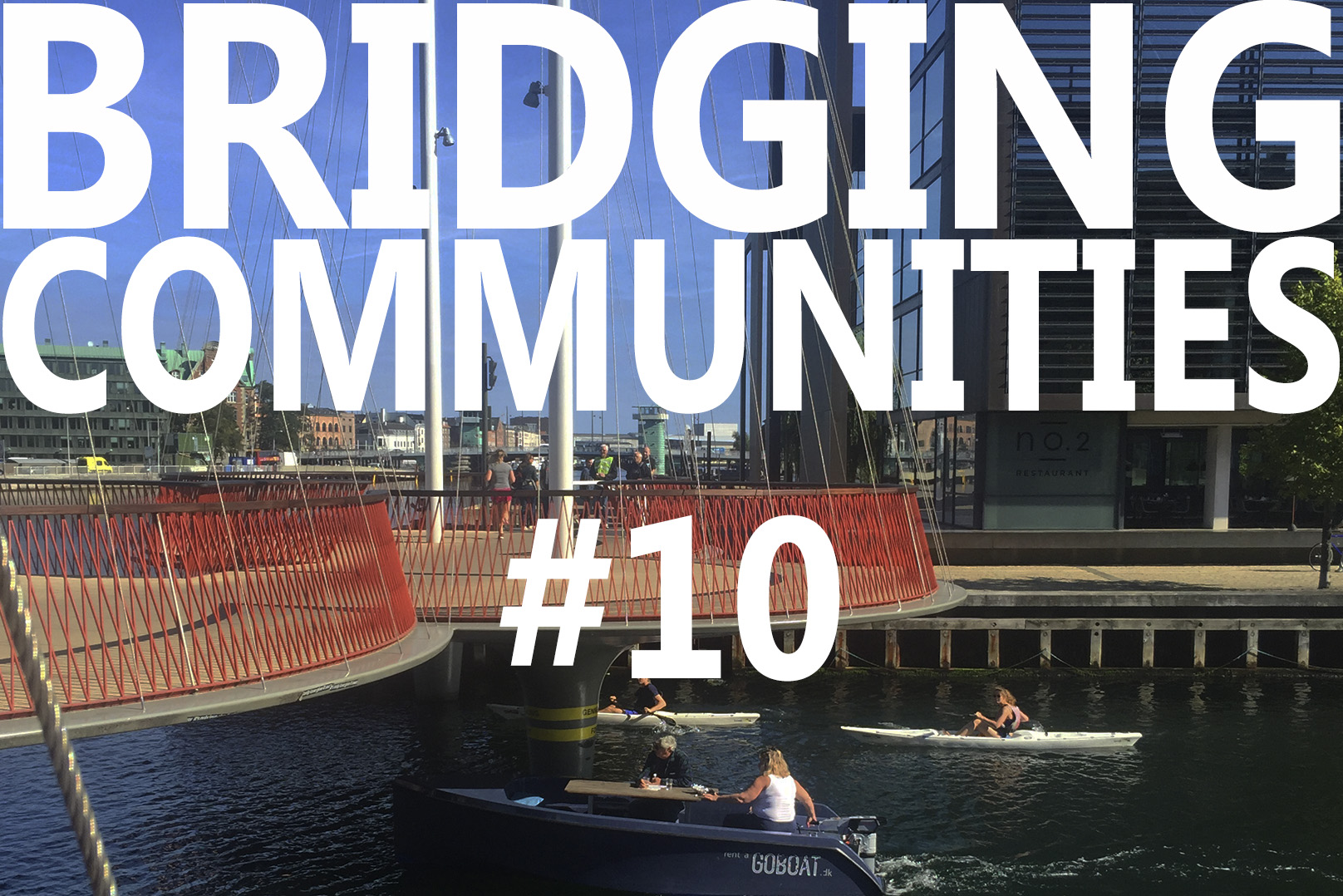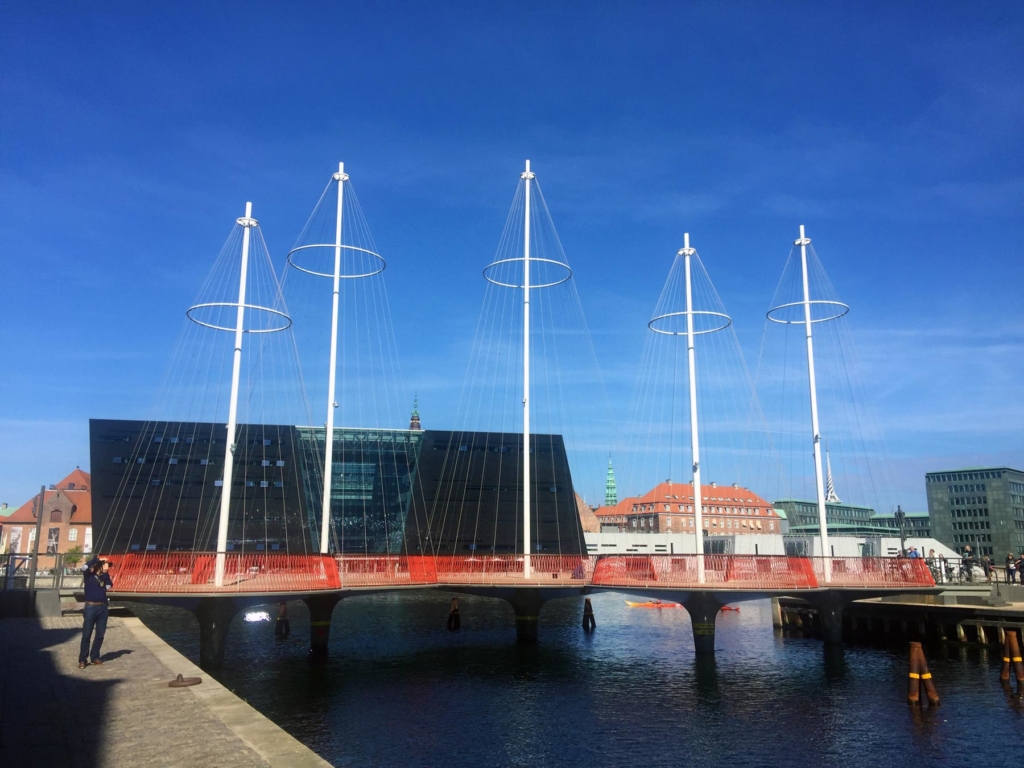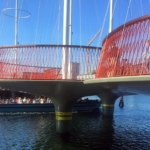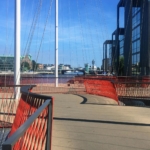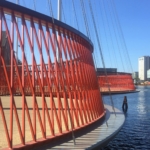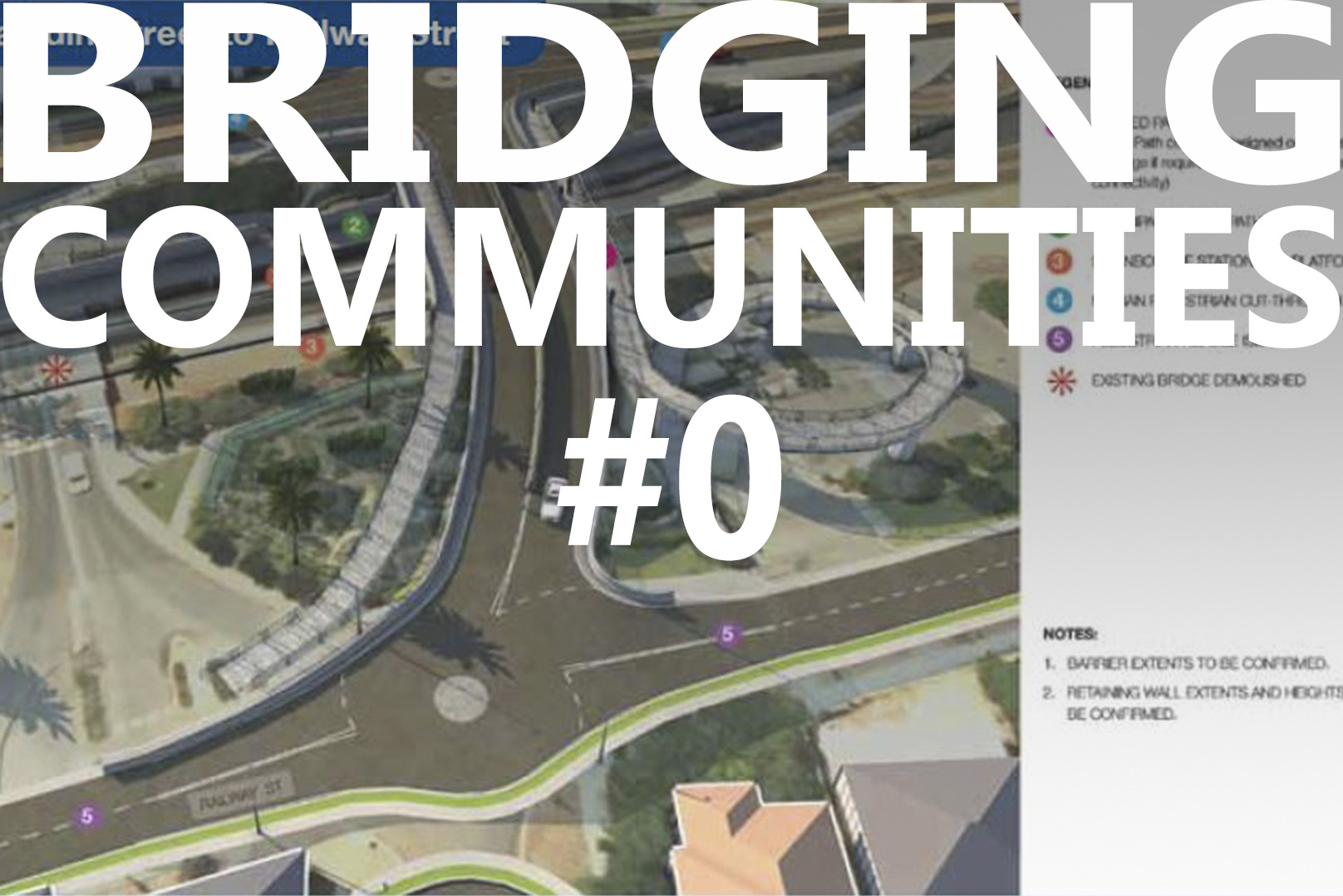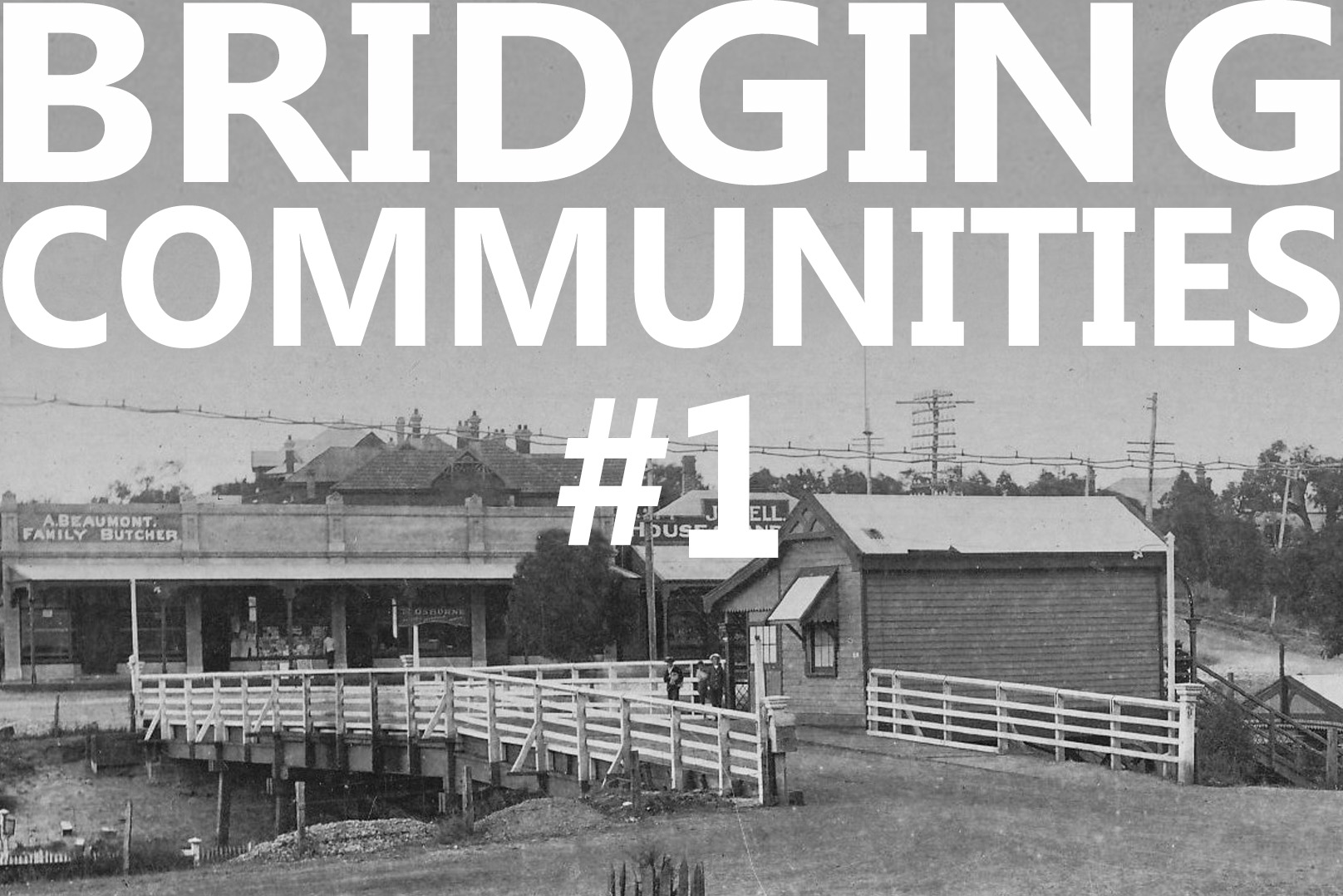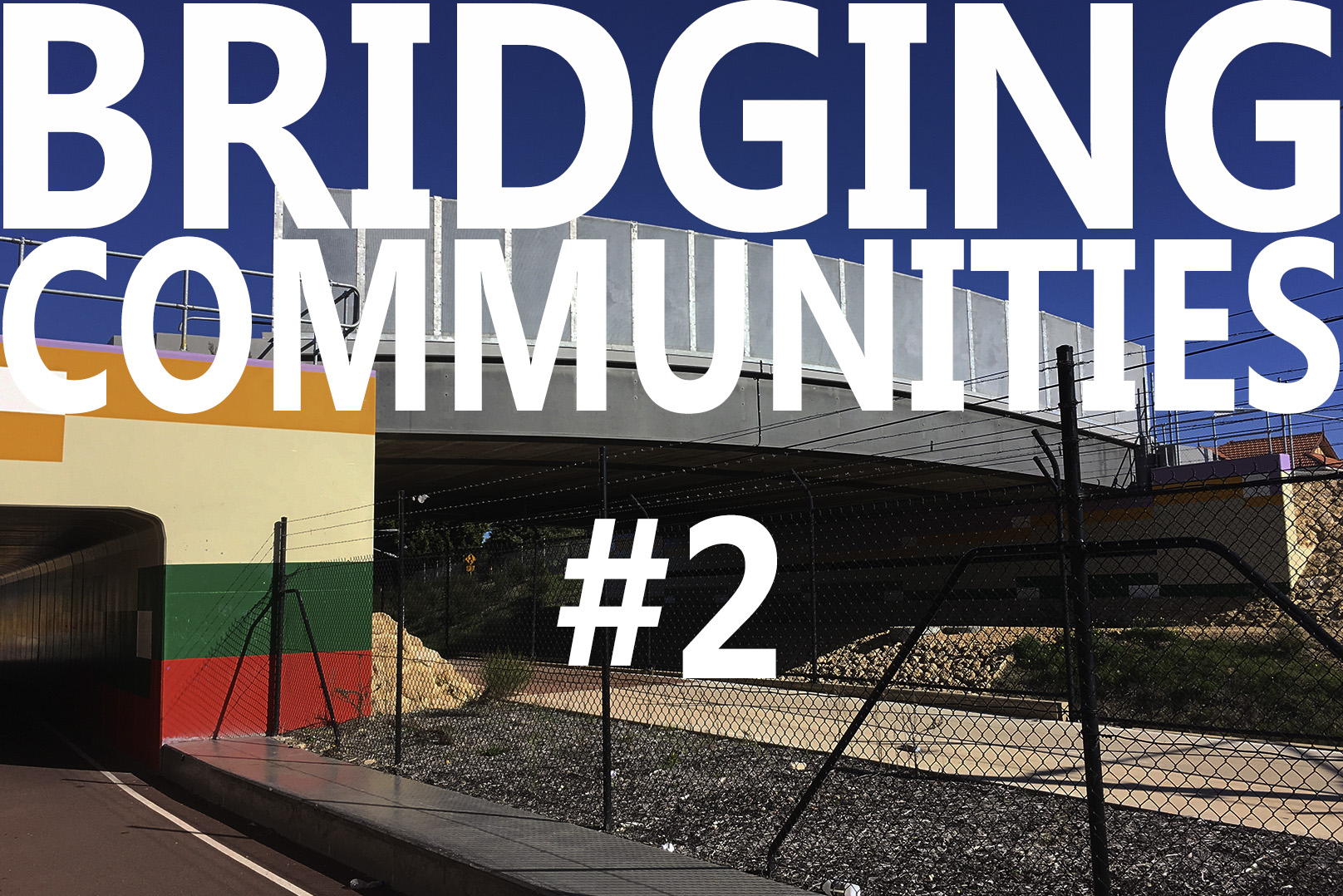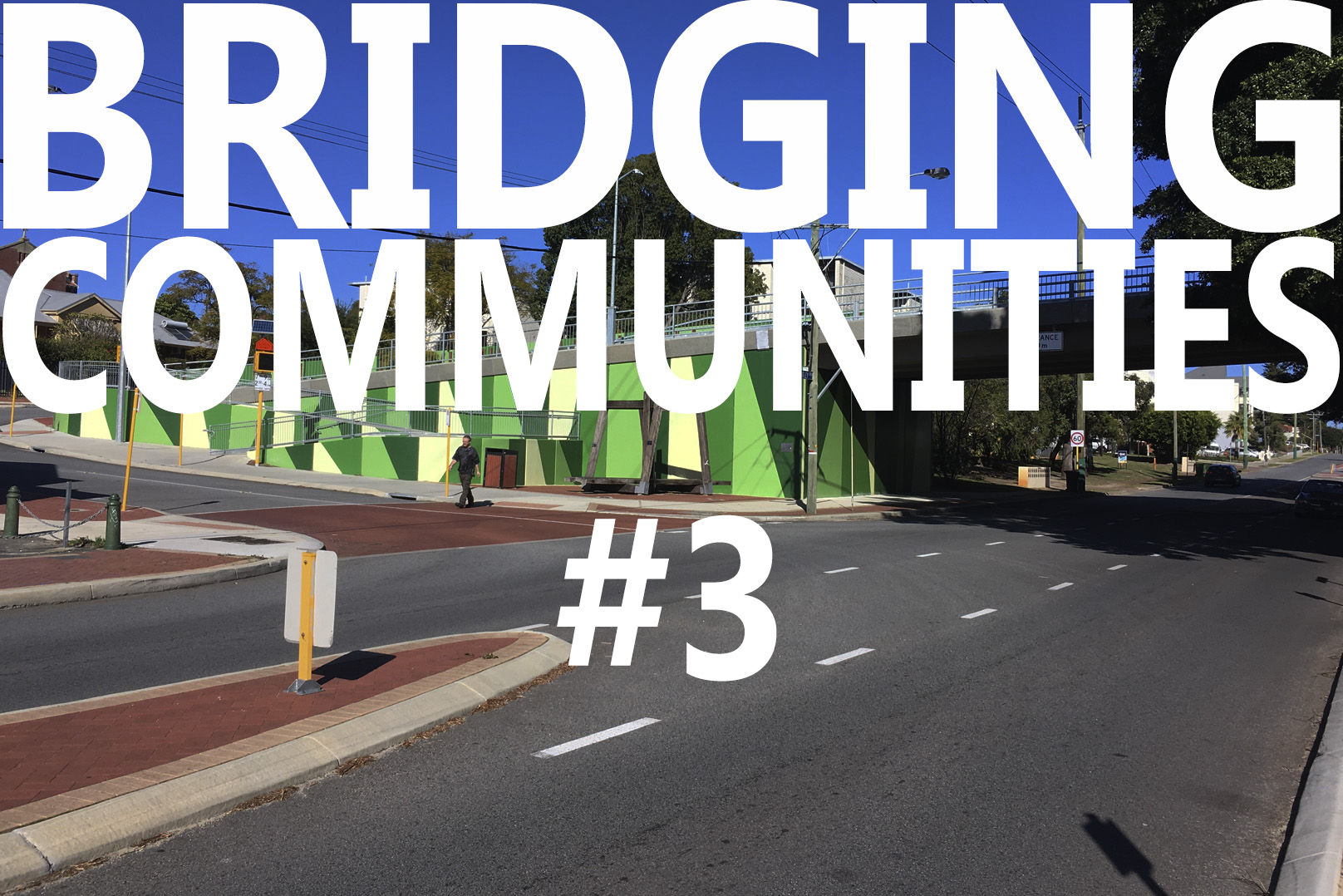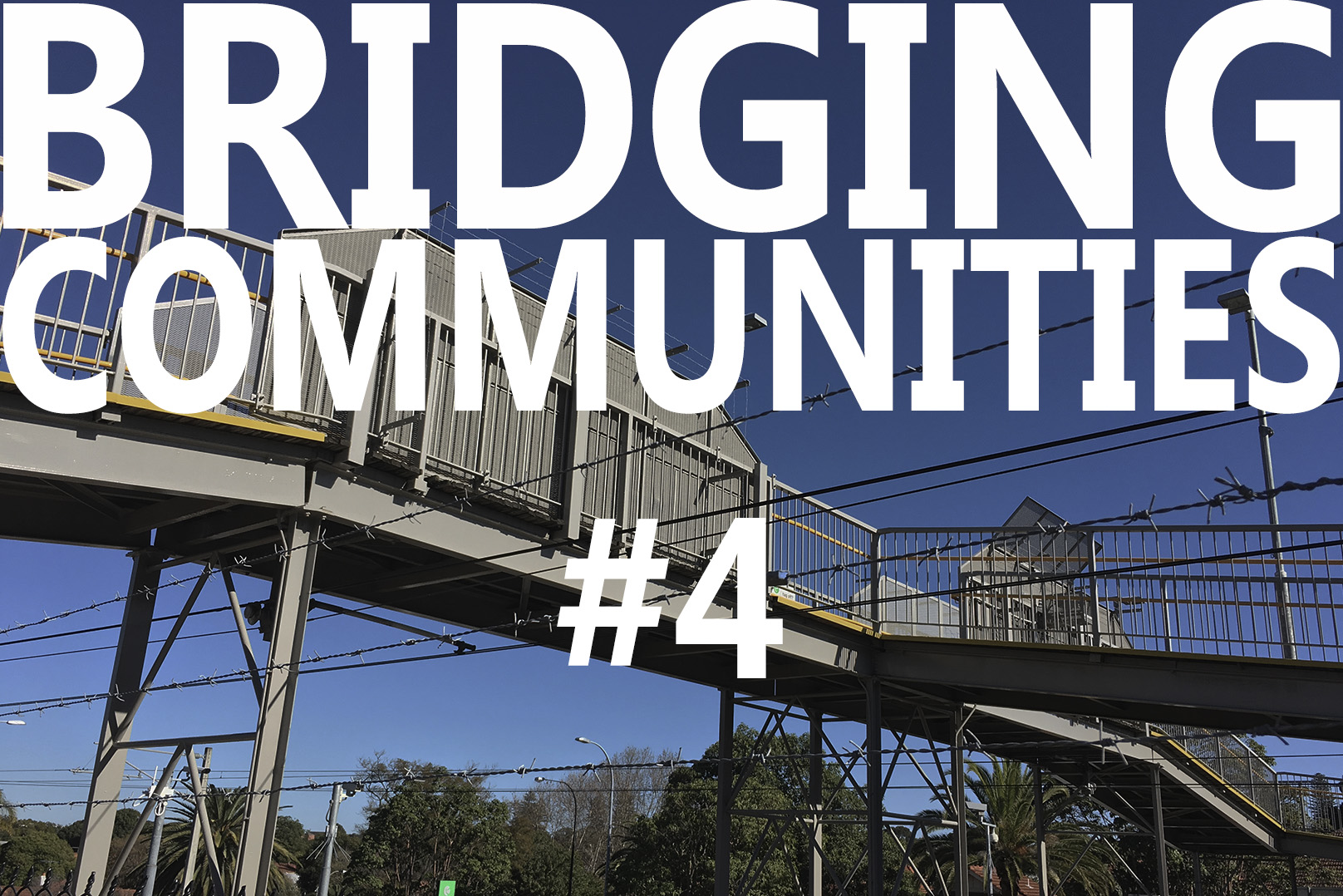Part of a series of posts by Neil Cownie on The Future of Swanbourne Village
This is another bridge that I discovered while experiencing the ‘Cirkelbroen’ bridge was designed by artist Olafur Elisson.
This bridge is quite incredible and almost needs to be seen to be believed. In a busy part of Christianshavn neighbourhood in Copenhagen, this bridge serves over 5,000 pedestrians and cyclists per day, while allowing house boats and sailing boats to pass under. Achieving this is not as easy as it may seem given the relatively low height of the bridge, too low to allow conventional sized sailing or motor craft to pass under.
The bridge consists of five circular platforms, one of which slides horizontally open to allow boats to pass through. The bridge designer states that the concept for the bridge was inspired by his youth as he remembers the fishing boats that he experienced in Iceland as a child. He remembers the boats were tied up next to one another, and at times when enough boats had gathered you could walk across the top of each boat to pass from one side of the harbor to the other. In this same way the bridge has been expressed as five individual discs, or boats, that interconnect, and allow the traffic to pass across the canal.
Cirkelbroen celebrates pedestrians. It reflects the daily life and intimacy that you find around the canal in the Christianshavn neighborhood, its houseboats and sailing boats, the unique life on the ramparts. Copenhagen’s harbor was once a centre of maritime activity, and Cirkelbroen is a testimony to that history. While working on the bridge, I remembered the fishing boats I saw as a child in Iceland. In the harbor, the boats were often moored right next to each other, and it sometimes seemed that you could even cross the harbor just by walking from boat to boat.
The bridge is made of five circular platforms, and it contributes to a larger circle that will form a pedestrian route around Copenhagen Harbour, where people – cycling, running, walking – can see the city from a very different perspective. As many as 5,000 people will cross this bridge each day. I hope that these people will use Cirkelbroen as a meeting place, and that the zigzag design of the bridge will make them reduce their speed and take a break. To hesitate on our way is to engage in bodily thought. I see such introspection as an essential part of a vibrant city.
The designer of the ‘circle bridge’, Olafur Elisson made the following statement that is most relevant to what I hope to promote within our Swanbourne Village precinct. Elisson says:
“In Copenhagen, progress has been made in thinking about what constitutes quality in urban space and about the atmosphere of a space. Obviously, one cannot plan atmosphere, as it is co-produced by the people who use the space, but it is possible to nurture an atmosphere, to allow it to grow. As an artist, I work with abstract and emotional qualities, so this is where, I believe, art can play a role. I’m convinced that politicians, urban planners, and developers need to expand their toolbox by bringing in what I would call creative reality producers – artists, social scientists, sociologists, anthropologists, historians, dancers, poets, environmental activists, and philosophers – to rethink urban spaces.
In Denmark, there is a strong tradition of focusing on inclusion, on accepting the other – welcoming ideas that we have not yet had, people we have not yet met, and unpredictable encounters. It’s something we all have to work on together, and one way of addressing this is in how we plan public space. Cirkelbroen, I hope, will contribute to improving the quality of life and the development of a hospitable and inclusive city.”
This bridge serves as a wonderful example of how a design led solution can add so much more value to a project. Way beyond the solution of simple utilitarian requirements, the added beauty and meaning is enjoyed by the whole community as part of their everyday experience.
Images by Neil Cownie.
Go back to the The Future of Swanbourne Village
The Bridging Communities Series
- #0 The Precinct - Swanbourne Bridge
- #1 Old Swanbourne Bridge
- #2 Third Avenue Bridge
- #3 Seventh Avenue
- #4 Mt Lawley Station Bridge
- #5 Swanbourne Aboriginal History
- #6 Swanbourne European History
- #7 Swanbourne Hotel
- #8 Koombana Bay Bridge
- #9 BIG Bridge Copenhagen
- #10 Circle Bridge Copenhagen
- #11 Tulhus Bridge - Erik Andersson
- #12 RV73 Bridge - Erik Andersson
- #13 The Architect Bridge - Erik Andersson
- #14 Ruyi Bridge - China
- #15 Cork Ireland Bridge - O'Donnell + Tuomey Architects
- #16 Bat Bridge - Next Architects
- #17 Leederville & Claremont Bridges
- #18 Dawson's Garden Centre
- #19 Swanbourne Village
- #20 Cottesloe Central Bridge
- #21 Showgrounds Bridge
- #22 Art Overlays
- #23 Swanbourne Village - Parameters - Levels
- #24 Swanbourne Village - Parameters - Community Hub
- #25 Swanbourne Village - A Better Way
- #26 Swanbourne Village – Call in the Cavalry
- #27 Sydney Light Rail Bridge
- #28 Hamilton Street Bridge, Subiaco
- #29 Compare the Pair
- #30 Opportunity not a Barrier
- #31 Rose Garden Bridge
- #32 Somers Town Bridge
- #33 Swanbourne Village – Original Bridge
- #34 Bayswater Bridge
- #35 Main Roads WA Scheme
- #36 NCA Scheme – The Big Picture
- #37 NCA Scheme – Master Plan
- #38 NCA Scheme – Relocated Dawsons Garden Centre
- #39 NCA Scheme – New Built Form
- #40 NCA Scheme – A New Community Pedestrian Bridge
- #41 NCA Scheme – Proposed Train Station Precinct
- #42 NCA Scheme – Swanbourne Village Market Day
- #43 NCA Scheme – Pedestrian environment
- #44 NCA Scheme – Cultural overlay
- #45 NCA Scheme – Centre of Excellence for a Sustainable Future
- #46 NCA Scheme – An Alternative Pedestrian Bridge Design

